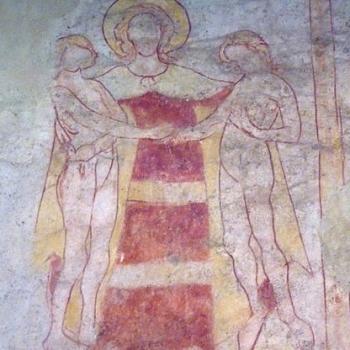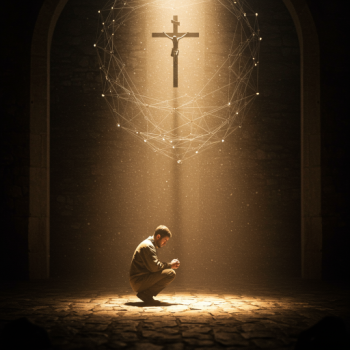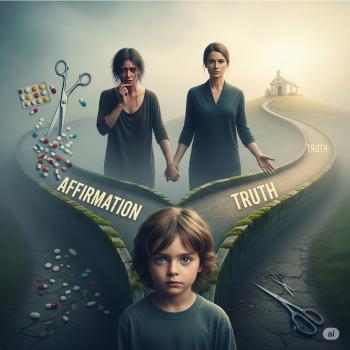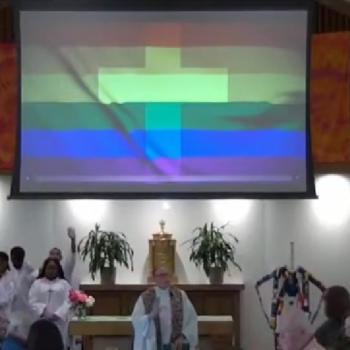 What is a student of Christ the Teacher?
What is a student of Christ the Teacher?
In my previous entry, I addressed Dr. Steve Nemes’ claim that Jesus’ rebuke of the Scribes and Pharisees for their adherence and reliance on “tradition” over that of the Word of God and the “Teacher.” I demonstrated that Dr. Nemes misinterprets Matthew 23:8-10 and that Jesus was not condemning the Scribes and Pharisees’ teaching authority (He endorses it in Matthew 23:1), but rather, their hypocrisy.
For this entry, let us assume Dr. Nemes is correct, and that Jesus was condemning “traditionalism” in all its forms. What criteria does he leave us to determine what the “Teacher” truly taught concerning proper development in doctrine? It is my claim that Dr. Nemes’ argument does not safeguard the proper understanding of the “Teacher” but sends all the “students” in the classroom into anarchy.
Below, I will be quoting directly from the video and paraphrasing at other times. If I have misquoted or misrepresented Dr. Nemes in any way, this is unintentional and he can feel free to correct me at any time.
The Student Revisited
Dr. Nemes Argument Paraphrased and Restated: (at 35:52 in the video)
Christ says He alone is the only unquestionable Teacher (Matthew 23:10) and all Christians are only students and disciples. The Early Church Fathers and Church councils are only good insofar as we only regard them as tutors. Roman Catholics (RC henceforth) and Eastern Orthodox (EO henceforth) set up other teachers beside Christ as “unquestionable” authorities and break Christ’s teaching. Protestants, on the other hand, only have one Teacher, which is Christ related in the Scripture. Therefore, to remain faithful to the Teacher, one must remain Protestant.
Dr. Nemes states repeatedly that “every tradition is an attempted interpretation of the word of God.” According to him, the Scribes and Pharisees became more faithful to their own “traditions” than to the “word of God.” He goes on to say that “it is one thing to preserve a tradition… and it is another thing to interpret the word of God properly.” Now, if “every tradition is an attempted interpretation of the word of God,” this “every” also included Dr. Nemes’ own interpretation of the word of God. His interpretation of Matthew 23:8-10 is therefore his “tradition.” Of course, he is not under Jesus’ condemnation of “traditionalism” because he can be questioned, and his “tradition” is not looked upon as “unquestionable.”
What is a “Student?”
Is this determined by self-identification as a student? If one thinks themselves a “student,” are they therefore a “student” of the Teacher? Is this some sort of Cartesian cognito, ergo sum situation? What of supposed “students” throughout the history of the Church who believed themselves one among other “students” who thought themselves to interpret “the word of God properly.” I am referring to “students” like Apollinaris, Arius, Nestorius, and Pelagius. In all four examples I use, all four would agree with Dr. Nemes’ understanding of the equality of each “student” to interpret the word of God. They would also state that they, and not their historically “traditionally orthodox” opponents held the proper understanding of the Teacher.
Apollinaris, Arius, and Nestorius also held ordained positions within the classroom (Church) and therefore I see no reason for Dr. Nemes to not consider them “star students” on the same level as Early Church Fathers like St. Augustine. Why could not Apollinaris, Arius, Nestorius, and Pelagius claim that those who disagreed with them were falling into the trap of the Scribes and Pharisees, adhering to their own “traditions” and not the Teacher? Dr. Nemes’ argument has provided justification (unintentionally of course) for any novelty and heresy throughout the history of the Church, as long as those teaching novelty and heresy are open to correction.
The Church as Student
Dr. Nemes answers:
Students go to the classroom to learn. If there is one Teacher, there is only one person in the classroom that can never be wrong, namely the Teacher. Everyone else is always possibly mistaken. Always possibly needing correction by the Teacher. Christ is the perfect teacher. All words of the student must be measured against the words of the Teacher. This is how one avoids the dangers of “traditionalism.”
And:
What a student says is not rejected a priori but is also not taken for granted as if it were infallible. It is critically tested and confirmed or rejected by what the Teacher said.
The reference to the “classroom” here is a reference to Scripture alone (sola scriptura), as Christ’s words are contained in the Gospels. Why are not the apostles viewed also as fellow “students” or “star students?” Dr. Nemes does not go into this much. However, he states that the apostles held a “special” position with the Church and that the Church is built upon the foundation of the apostles and prophets, which Dr. Nemes identifies as the Bible. Therefore, the apostles are not the Teacher, nor are they “star students,” but a unique category all their own. Furthermore, later generations are NOT “special” and thus need to stick to what Christ and the apostles taught (the Bible).
The Teacher and the Fullness of Truth
Dr. Nemes states:
Christ promised the Church that the Holy Spirit would lead it into all truth, but Christ does not specify the precise path to the truth. We cannot assume ahead of time what that truth is. Nor can we assume we will arrive at it by a certain path. We also cannot assume Christ lead the Church down a certain path to the truth because some “star student” agreed that Christ lead them down a path. There is no guarantee that a future generation could not come up with a theology that will correct previous generations.
And regarding unanimity, he states:
There has never been unanimity among Christians about any point of doctrine. (at 22:01)
Not only is there no guarantee or unanimity for Christians, but those also “star students” very far removed from the Teacher by time, language, and culture may understand the Teacher better than those closer in time, language, and culture:
It is possible that later star students will learn more from the Teacher and need to correct previous star student’s mistakes.
Dr. Nemes spells out how this works in his final appeal to Protestants to remain Protestants:
If you are a Protestant, this is how you understand the nature and necessity of the Reformation. After 1500 years of continued theological development along strongly traditionalist lines, in many cases, the Roman Catholic Church had found itself bound to certain ideas which were in contradiction to the truth.
The Student that can Bind and Loose (Matthew 16:19)
Dr. Nemes states:
The bishops may be the inheritors of the apostles and may have the ability to bind and loose, but this does not mean they do so appropriately. They could do this appropriately if they followed the method of the apostles.
What was this method? Dr. Nemes answers this, too.
When the apostles did so, they did so appropriately because they saw this done in front of them in a plain and public way apart from their own binding and loosing. Example: Peter allows the Gentiles to be baptized after receiving special revelation from God and seeing the Holy Spirit on the Gentiles. Acts 10. Peter allowed Gentiles in the Church because God allowed it in an obvious and public way.
To Dr. Nemes, the binding and loosing of later generations do not follow the above method. What was bound and loosed were in many cases questionable and contentious. They lacked clear and manifest revelation of God’s will in the matter. Therefore, there is no guarantee what was bound and loosed were done so appropriately. (If only the RC and EO were open to “correction” these issues would be resolved…)
The examples Dr. Nemes gives of those “traditions” later “star student” illegitimately bound and loosed are transubstantiation, the relationship between Scripture and Tradition, the veneration of icons, cult of Mary and the saints, justification, and sacramental theology. It is NOT surprising that Protestants reject all the above “traditions” based on their own interpretations (traditions) of what the Teacher taught. Again, the issue here concerns whether or not one can question those who “teach.”
The Student that Misunderstand the Teacher
Dr. Nemes repeatedly makes that claim that the RC and EO Churches are doomed because they not only elevate mere opinion to that of “unquestionable” truth, but they then have no way of correcting said opinions. In other words, a broken system beyond repair. Again, I paraphrase below:
The EO and RC see no possibility that their leaders can proclaim error. They will not preach the truth. Given this reality, it was necessary to leave. The RC and EO still operates within this system and cannot abandon error. It is therefore preferable to stay outside its bounds.
In Dr. Nemes’ critique of RC and EO, he makes multiple assertions that all Christians are students of one Teacher and thus subject to criticism and correction, when needed. By what standard are these students to judge whether other students have fallen into error? The teaching of the Teacher, of course! The Bible. But the Bible does not “teach” per se. It contains teaching, but it cannot directly teach anyone. The Bible requires interpretation (a tradition), proper interpretation (proper tradition). Dr. Nemes assumes he has this interpretation (tradition) and since RC and EO disagree with him, they do not. They err and their system too broken to accept Dr. Nemes’ true interpretation (tradition).
Is there one proper interpretation? St. Peter seems to think so.
2 Peter 3:15-16
15 And count the patience of our Lord as salvation, just as our beloved brother Paul also wrote to you according to the wisdom given him, 16 as he does in all his letters when he speaks in them of these matters. There are some things in them that are hard to understand, which the ignorant and unstable twist to their own destruction, as they do the other Scriptures. [emphasis mine]
How else can the ignorant and unstable twist “it” to their own destruction unless there is something to twist in the first place?
The Student that Property Understands the Teacher
St. Vincent of Loren also thinks so and warns others of the dangers of theological novelty and innovation (heresy) in his Commontorium written is 434 AD.
“Here, it may be, someone will ask, since the canon of Scripture is complete, and is abundantly sufficient, what need is there to join to it the interpretation of the Church? The answer is that because of the very depth of Scripture all men do not place one identical interpretation upon it. The statements of the same writer are explained by different men in different ways, so much so that it seems almost possible to extract from it as many opinions as there are men.
Novatian expounds in one way, Sabellius in another, Donatus in another, Arius, Eunomius and Macedonius in another, Photinus, Apollinaris and Priscillian in another, Jovinian, Pelagius and Caelestius in another, and latterly Nestorius in another. Therefore, because of the intricacies of error, which is so multiform, there is great need for the laying down of a rule for the exposition of Prophets and Apostles in accordance with the standard of the interpretation of the Church Catholic.” [emphasis mine]
By divorcing the proper understanding of Scripture (interpretation/tradition) from the Church, Dr. Nemes allows for the acceptance of novelty and innovation (heresy) in the Church. The issue for Dr. Nemes concerns the “traditionalist” trap of the Scribe and Pharisees to bind others to their mere interpretation (traditions). In justifying his own “tradition,” Dr. Nemes has opened the door for all others, as long as he can question other “traditions”.
Dr. Nemes has enrolled his Protestant brothers and sisters in a classroom of chaos, not order.
Clarifying questions for Dr. Nemes to answer:
How does one become a “student” of the one true Teacher?
Why are Apollinaris, Arius, Nestorius, and Pelagius not “star students?” Or are they?
How do we determine which interpretation is truly the Teacher’s correction?
Like what you read? Please check out my other writing here.
Please like and follow me on Facebook.












